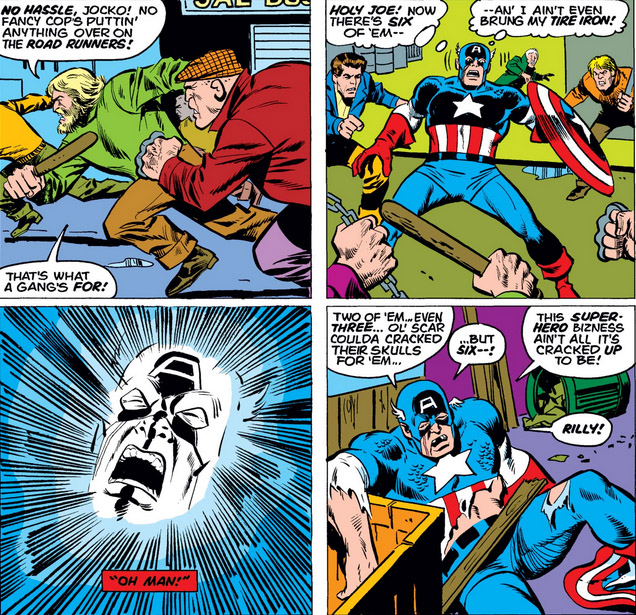The machinations of the mysterious group known as
They (no relation to "Them," an organization later referred to as
Advanced
Idea
Mechanics) reach back to 1973, as they began to insert themselves into the affairs of super-beings for reasons unknown--as unknown as their identities, always appearing in shadow when they deigned to appear at all. We first learned of them when
the Orb made his play to wrest back control of the cycle show owned and operated by the Ghost Rider and his love, Roxanne Simpson; and for the next year, They continued to act behind the scenes in
Marvel Team-Up stories to sow chaos and even widespread destruction that the book's guest-star would attempt to quash with the help of either Spider-Man or the Human Torch.
At the time, their motives were anyone's guess, their actions as diverse as they were unpredictable. From what would seem to be fairly low-key involvement in supplying the Orb with gear to win back the business he helped to found, They began to flex their influence more forcefully, both around and even beneath the globe. It all breaks down as follows:
March-April, 1974 (four months following the Orb's appearance)
Traveling to the Savage Land, Vincent Stegron, an assistant to Curt Connors, uses an extract for cell regeneration to become Stegron, the Dinosaur Man, while intending to transport the region's dinosaurs to civilization in an insane plan to see their return to planetary dominance. And guess who provides the "ark" that will bring them all to New York?
You wouldn't think dinosaurs would be at all simple to corral--but Spider-Man does it as easy as you please, thanks to a super-strong if unstable formula that the Black Panther gives him to modify his webbing. Neither of these heroes wonders how an under-the-radar lab assistant like Stegron got his hands on a mammoth sky ark that can transport dinosaurs, nor do they seem interested at all in reverse engineering it to find any clues as to who created it--a lucky break for They, who it seems might have another pawn in writer Len Wein.
October, 1974
The witch doctor of the Lava Men receives a vision that leads him to machinery abandoned by the Mole Man which can be adapted to activate every volcano on Earth, thereby drowning the surface world in molten magma.
Thor and the Human Torch show up to destroy the machine, with Wein finally giving us our first glimpse of They--who strike us as little more than mischievous malefactors with too much time on their hands.
December, 1974
Spider-Man and Hercules
team up to stop a series of deadly earth tremors in Manhattan. But the culprit turns out to be a pawn of parties as yet unknown.
January, 1977
With neither Wein nor Gerry Conway (who scripted the Spidey/Hercules tale) showing any further interest in fleshing out They, the group lies dormant for two years until a link to them is established in
The Man Called Nova--yet we won't truly learn of that link for some time, since writer Marv Wolfman appears either unaware of any plans involving They (assuming there
are any concrete plans at this point) or uninterested in dropping their name. And it isn't like Nova doesn't have enough to worry about in stopping the mad plans of
Tyrannus.
On an unrelated note, Wolfman inadvertently provides a scene that in hindsight could have served as a warning against rushing this flash in the pan into his own series--though for what it's worth, the book had a run of 25 issues before it folded.
March, 1977
Len Wein returns to have They resurface two months later and at last step out from the sidelines (if not the shadows), conscripting the Absorbing Man to
attack the incredible Hulk.
Of course, what Creel plans to do and what actually happens are often two different things.
As we can see, Wein isn't ready to tip his hand on They, who
still haven't shown that they're much more than slightly sadistic troublemakers getting their kicks from provoking conflict. Yet the honor of providing substance to They would fall to someone else, as, 2½ years later, Roger Stern decides on behalf of Marvel that it's time for all of us to finally learn:






















































